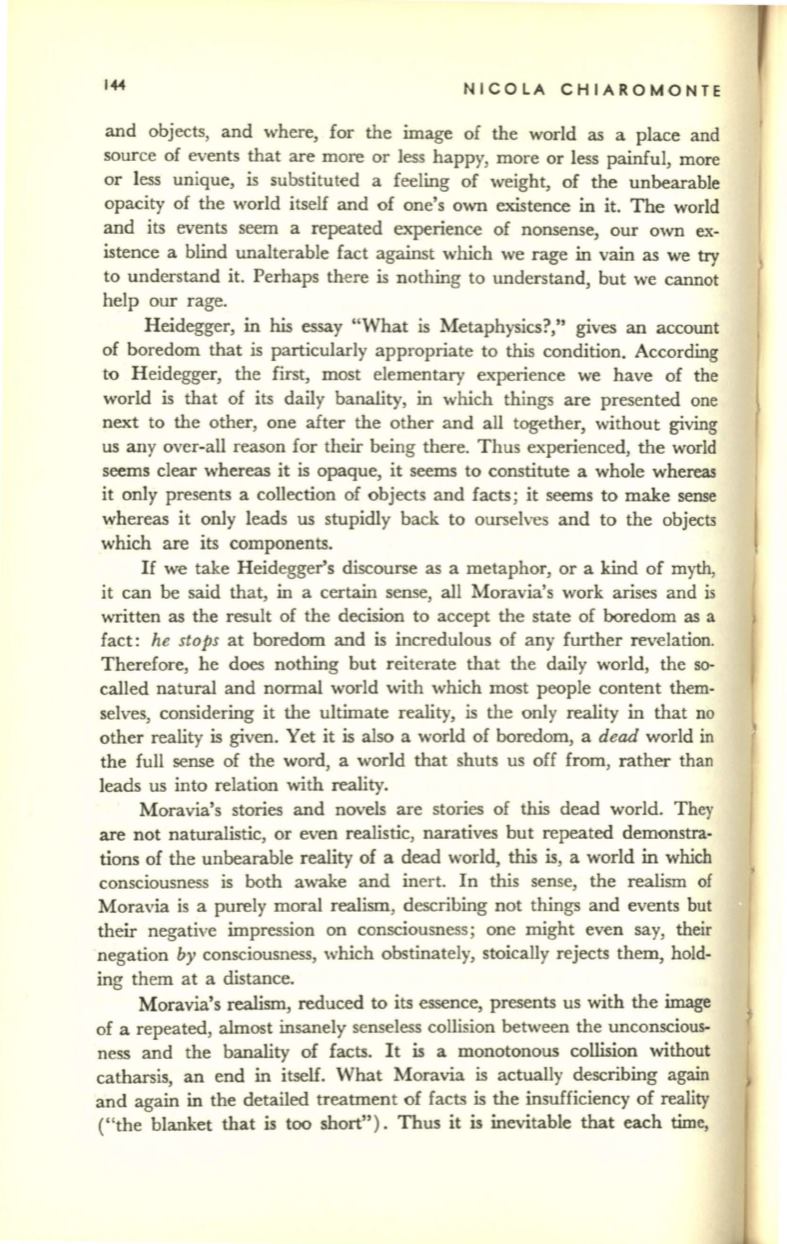
144
NICOLA CHIAROMONTE
and objects, and where, for the image of the world as a place and
source of events that are more or less happy, more or less painful, more
or less unique, is substituted a feeling of weight, of the unbearable
opacity of the world itself and of one's own existence in it. The world
and its events seem a repeated experience of nonsense, our own ex–
istence a blind unalterable fact against which we rage in vain as we
try
to understand it. Perhaps there is nothing to understand, but we cannot
help our rage.
Heidegger, in
his
essay "What is Metaphysics?," gives an account
of boredom that is particularly appropriate to this condition. According
to Heidegger, the first, most elementary experience we have of the
world is that of its daily banality, in which things are presented one
next to the other, one after the other and all together, without giving
us any over-all reason for their being there. Thus experienced, the world
seems clear whereas it is opaque, it seems to constitute a whole whereas
it only presents a collection of objects and facts; it seems to make sense
whereas it only leads us stupidly back to ourselves and to the objects
which are its components.
If
we take Heidegger's discourse as a metaphor, or a kind of myth,
it can be said that, in a certain sense, all Moravia's work arises and is
written as the result of the decision to accept the state of boredom as a
fact:
he stops
at boredom and is incredulous of any further revelation.
Therefore, he does nothing but reiterate that the daily world, the so–
called natural and normal world with which most people content them–
selves, considering it the ultimate reality, is the only reality in that no
other reality is given. Yet it is also a world of boredom, a
dead
world in
the full sense of the word, a world that shuts us off from, rather than
leads us into relation with reality.
Moravia's stories and novels are stories of this dead world. They
are not naturalistic, or even realistic, naratives but repeated demonstra–
tions of the unbearable reality of a dead world, this is, a world in which
consciousness is both awake and inert. In this sense, the realism of
Moravia is a purely moral realism, describing not things and events but
their negative impression on consciousness; one might even say, their
negation
by
consciousness, which obstinately, stoically rejects them, hold–
ing them at a distance.
Moravia's realism, reduced to its essence, presents us with the image
of a repeated, almost insanely senseless collision between the unconscious–
ness and the banality of facts. It is a monotonous collision without
catharsis, an end in itself. What Moravia is actually describing again
and again in the detailed treatment of facts is the insufficiency of reality
("the blanket that is too short"). Thus it is inevitable that each time,


